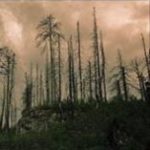Setting record straight on fuel treatments in forests
Posted: October 9, 2017Source: Montana Standard – DAVE ATKINS and 11 co-signers

Over the years, occasional guest columns have argued incorrectly that fuel treatments in our forests don’t affect wildfires. George Wuerthner’s column of Wednesday, Aug. 2, is among the most recent and misleading. We the undersigned are compelled to provide a more thorough and nuanced assessment of the value of fuel treatment.
First, we must clarify an oft-repeated distortion. Commercial logging and fuel treatment are not synonymous. Although fuel treatment can produce commercial products at times, the objectives of fuel treatment and commercial logging may be entirely different. In fact, some types of commercial harvest could increase risk of negative fire effects if larger fire resistant trees are not retained and limbs and tree tops are not properly managed. In contrast, fuel treatment may be limited to non-commercial activities such as planned burning alone or thinning small trees and burning them on site. In other cases, effective fuel treatment may require removal of medium sized trees. Such action can produce usable wood products that offset some of the cost of fuel treatment, and, as importantly, can reduce the material that would burn and produce more smoke from prescribed burning.
He argues that “under extreme fire weather conditions, almost all fuel reductions fail” and then combines the inaccurate statement “all large fires burn under extreme weather.”
We know under the worst conditions wildfire can overwhelm forests in all types of fuel condition with little distinction. Fortunately, such extreme “red flag” conditions remain relatively rare on most fires. Under less extreme conditions, treated areas can provide anchor points for suppression activities and safe areas to back-fire against and reduce fire intensity. Absent such features, fires are only more likely to increase in size. Fuel treatments also assist us in maintaining 95 percent effectiveness at suppressing unwanted fires during initial attack.
We acknowledge that controlling wildfire is a risky and uncertain business. For this dangerous work we need a full array of tools, none of which can be effective under all conditions. Understory fuel treatments are particularly effective in the dry forest types like ponderosa pine where wildfire risks are the highest. By extension of the logic Wuerthner espouses, we should not wear seat belts in our cars because they are not 100 percent effective in the worst accidents.
He then argues that because fuel treatment is relatively rare on the landscape and because such areas need frequent retreatment, the chance of a wildfire encountering such areas is small and thus treatment is not worth the effort. Again that suggests we shouldn’t put on our seat belt because the chance of having an accident when we get in the car is rare. He is advocating playing Russian Roulette. Our conclusion is entirely different. Our current small inventory of treated areas and the positive benefits of such treatments argue for a great expansion of thinning and burning. Firefighters are using these fuel reduction tactics now on the current fires.
We have to ask what purpose “chronic objectors” have in slowing this beneficial work. People who deny the effectiveness of fuel treatment are conveniently ignoring the truth of basic physics and chemistry. They also ignore long-term experience. The Forest Service conducted over 3,000 assessments of fuel treatments that encountered wildfires in the past decade and 89 percent reduced the fire intensity and/or helped the fire managers fight the fire. We encourage readers to look at treesource.org where there are timely articles on wilderness fire management, tribal use of fire in the past and present, repeat photography and interviews with fire scientists and managers. Don’t be misled. Fuel treatments work.
Frank Allen, journalist
Don Artley, Montana state forester, retired
Dave Atkins, president Treesource.org
Dale Bosworth, U.S. chief forester, retired
Allen Chrisman, incident commander, retired
Orville Daniels, forest supervisor, retired
Mick Harrington, research fire ecologist, retired
Tim Love, district ranger, retired
Ed Monnig, forest supervisor, retired
Kevin Ryan, research fire scientist, retired
Steve Siebert, UM professor CFC, emeritus
Jerry Williams, national director of fire, retired

